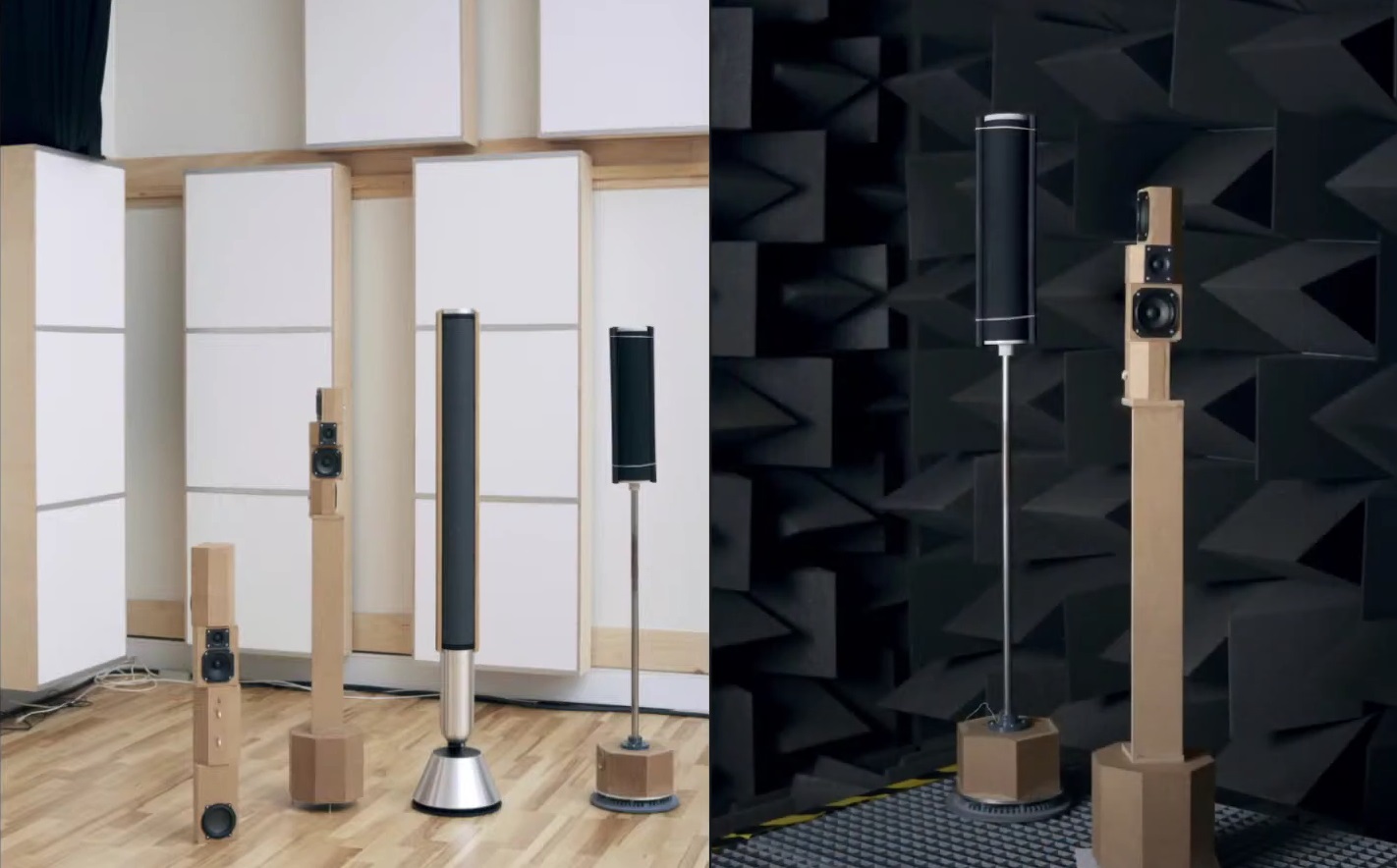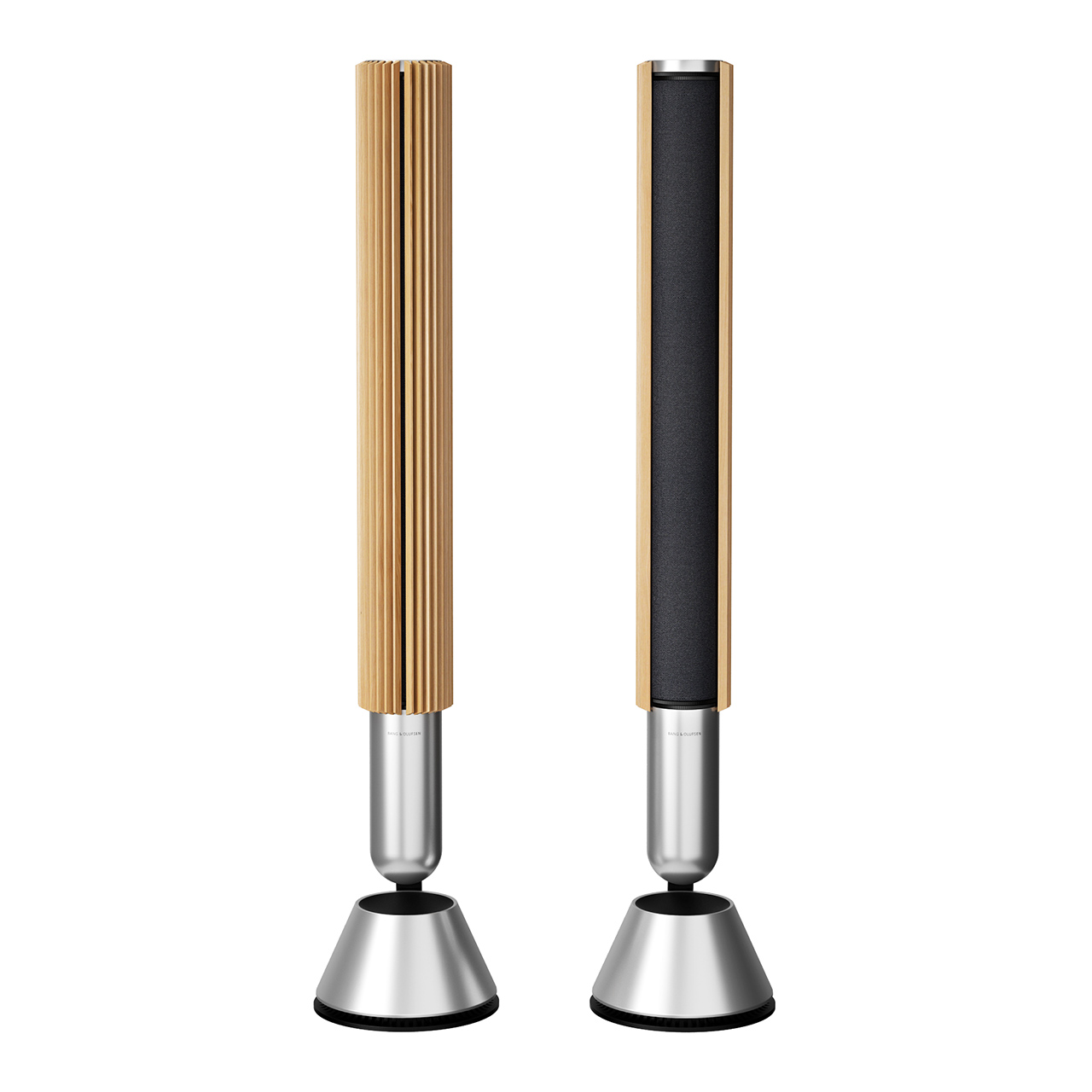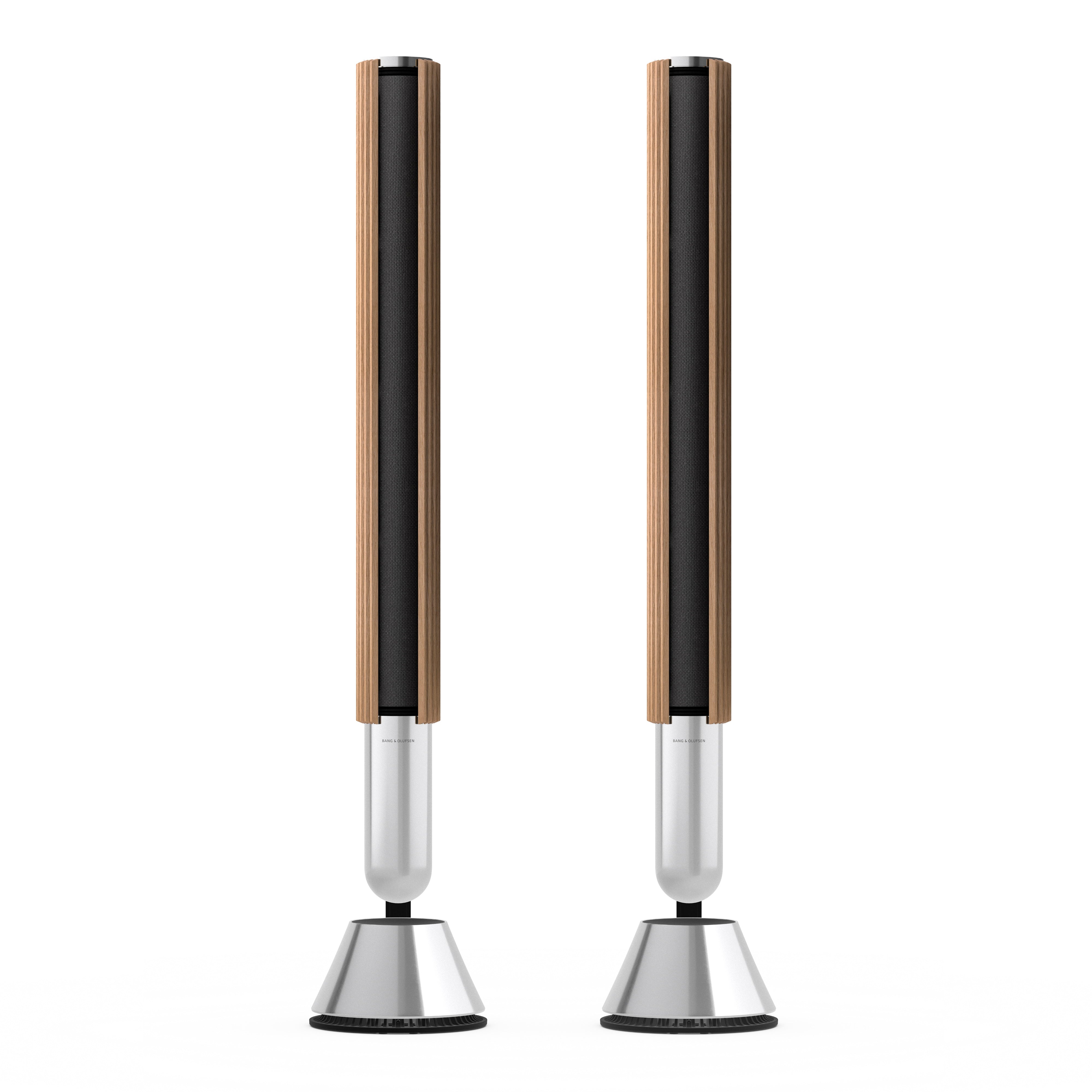When the recording calls for it, those low frequencies are substantial and go from 27 Hz up to 200 Hz, when the single 6.5-inch woofer, employing a ferrite magnet and a coated paper cone, bows out and lets the three full-range drivers take over the heavy lifting. These 3-inch transducers, which use neodymium magnets and paper cones, cover the lion’s share of the audio spectrum. In the spirit of an omnidirectional design, one driver is frontally placed circa ear level, with an additional driver on the left and right side, above and below the center driver. A single 1-inch tweeter, using a neodymium magnet and a textile dome, is situated above the full-range center driver and carries on business from 4,000 Hz up to 23,000 Hz.
That versatility is a result of the speaker’s Beam Width Control, which optimizes the listener experience depending on setting. In the Narrow directivity mode, the three full-ranges are used from 200 Hz to 4,000 Hz, so driver output favors a listener sitting in front of the speakers, without the interference of side and rear wall reflections. This is where “serious” listening will be done, and the Beolab 28 rewards just that. In Wide mode, the sonic stage diffuses to maintain a natural tonal balance to the side or when moving about the room, as one might experience in a social setting with more than a listener or two. Here, the front-mounted full-range is still used from 200 Hz to 4,000 Hz and the side-mounted full-ranges are used all the way up to 15,000 Hz, albeit at a lower level at the higher frequencies.



